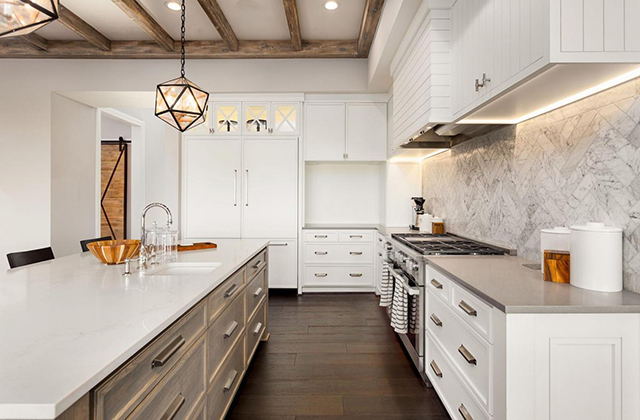Modern Kitchen Remodeling Ideas That Are Right on Target
Are you planning to remodel your kitchen? Whether you are planning a major kitchen renovation or simply enhancing one or two aspects of your kitchen, it is essential to think twice or even up to a hundred times on how you will do it. Your kitchen renovation is an important undertaking as a successful kitchen remodeling project may translate to recouping a substantial portion of your investment in terms of added value and aesthetic appeal and effective draw to potential buyers, if you are planning to sell your house. A good mood in cooking your food sometimes rely on modern kitchen designs Sydney. Owning a dog can provide hours of fun and enjoyment for the whole family but they can be a little demanding at times you need also to make sure that they are comfortable by providing them shelter and having a Sydney pet doors designed when they enter their home.
There are several considerations that will play important roles in your decision-making. Basically, your kitchen remodeling will largely be dependent on the kitchen design that you like and the budget that is required by your kitchen remodeling. You also have to do your own research regarding the imperative steps in kitchen remodeling before starting with your project. You cannot expect to have a good kitchen design if you hastily go through your renovation project.

There are several steps that you have to follow in order to be assured that you will end up with a good kitchen design. First, you have to make your research about various kitchen models and designs that are relevant to your current theme and style. It is better that you gather several kitchen ideas as it will provide you more choices in terms of the most appropriate kitchen remodeling design.
You may check out new ideas in magazines, builder’s model homes, showrooms or even in the homes of your friends and neighbors. In searching for great ideas, it is essential that you consider how each design can enhance your lifestyle. It is recommended that you harness your creative juices and your imagination when exploring interesting and unique design ideas for your dream kitchen. You can also make a compilation of pictures, structures and drawing of the kitchen models that you like best. These can serve as points of discussion with your home interior design specialist or home improvement contractor.
Once done with the preliminary activities, you can proceed to the next phase which involves careful assessment of the current structure of your kitchen. This is the particular stage where you will decide which essential appliances go in your new kitchen model. Since the refrigerator, stove and sink are the essential appliances in the kitchen, they should be strategically located in the layout of your kitchen where you will be allowed to move them around easily.
The last step entails the determination of the best kitchen model or design that complements your personal needs and preferences. This is where you will have to consider the combination of fabrics and colors that you plan to incorporate into the new kitchen design.
One important consideration that you always have to take into account when planning your kitchen remodeling project is your budget. You will see that kitchen remodeling is not a simple undertaking especially if you pull in all the necessary elements required by the project. These include the budget and space limitations, technical aspects like electronic wiring and plumbing and material selection. That is why it is recommended that you consult an expert kitchen designer to help you in your remodeling project. It is best that you wisely use all the space available to ensure that you are not just throwing your investment away. An expert in kitchen designing and remodeling will likely know the best answers and solutions to the management of kitchen spaces.
You will also have to consider your kitchen size when remodeling your kitchen. Most old kitchen models use limited space. That is why homeowners usually opt to extend their kitchen space. There are several ways where you can extend your kitchen space while saving up on a few dollars. You have the option of using the space that was once devoted for the pantry, entrance way or porch. You may also opt to get rid of the rarely-used portions of the dining room. These are few of the practical solutions that you may choose in order to remedy the problem of limited space in your kitchen.
Remodeling or updating your kitchen is an important undertaking. It is important that you follow the right steps in order to be assured that you are making a sound investment that would really enhance the value of your home.
Learn how to sell your own house here: For Sale By Owner
If you’re looking to buy a home from an FSBO listing check here: FSBO Listing
Article Source: http://EzineArticles.com/expert/Laurel_R._Lindsay/430470
Article Source: http://EzineArticles.com/4143582




